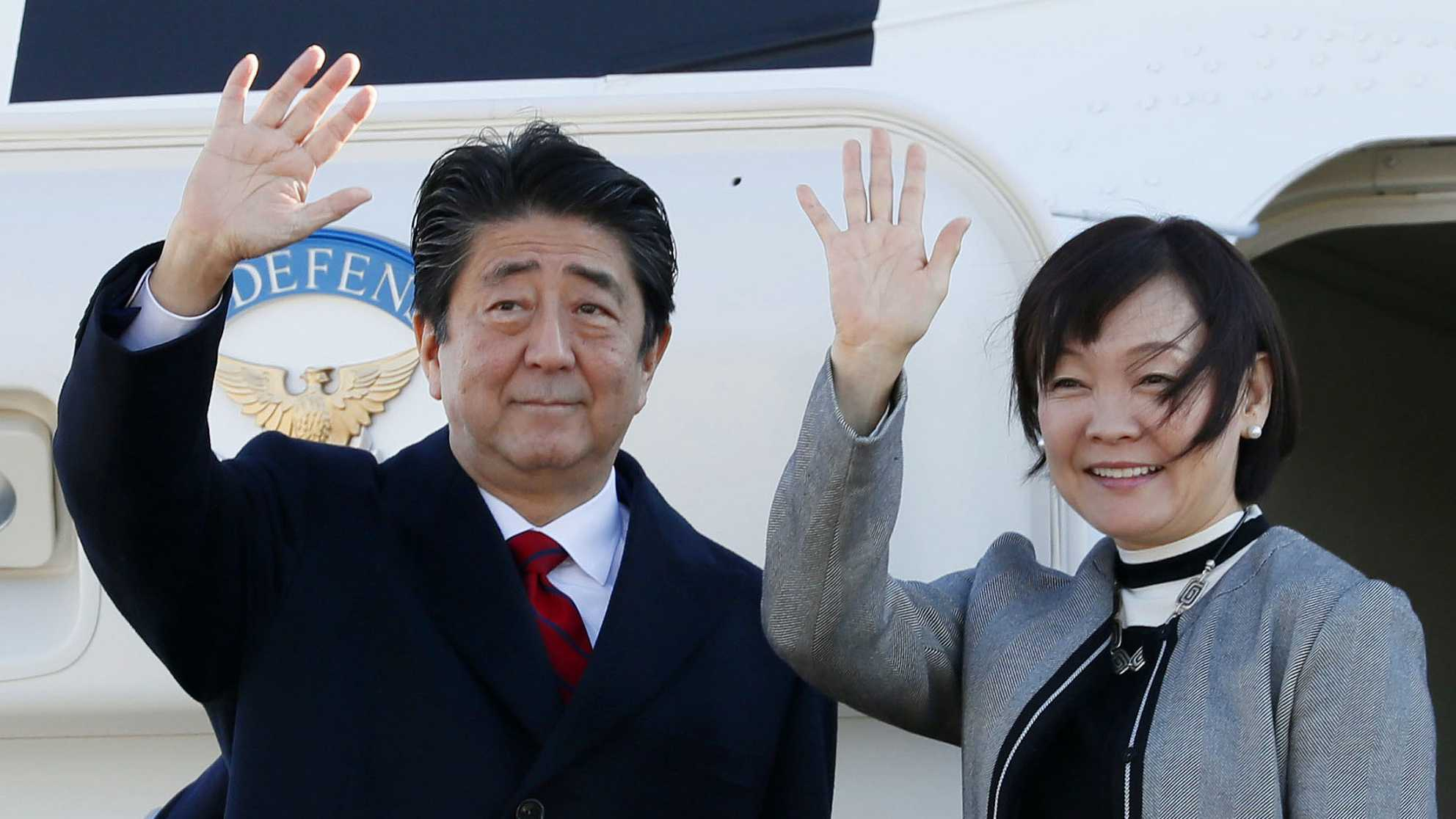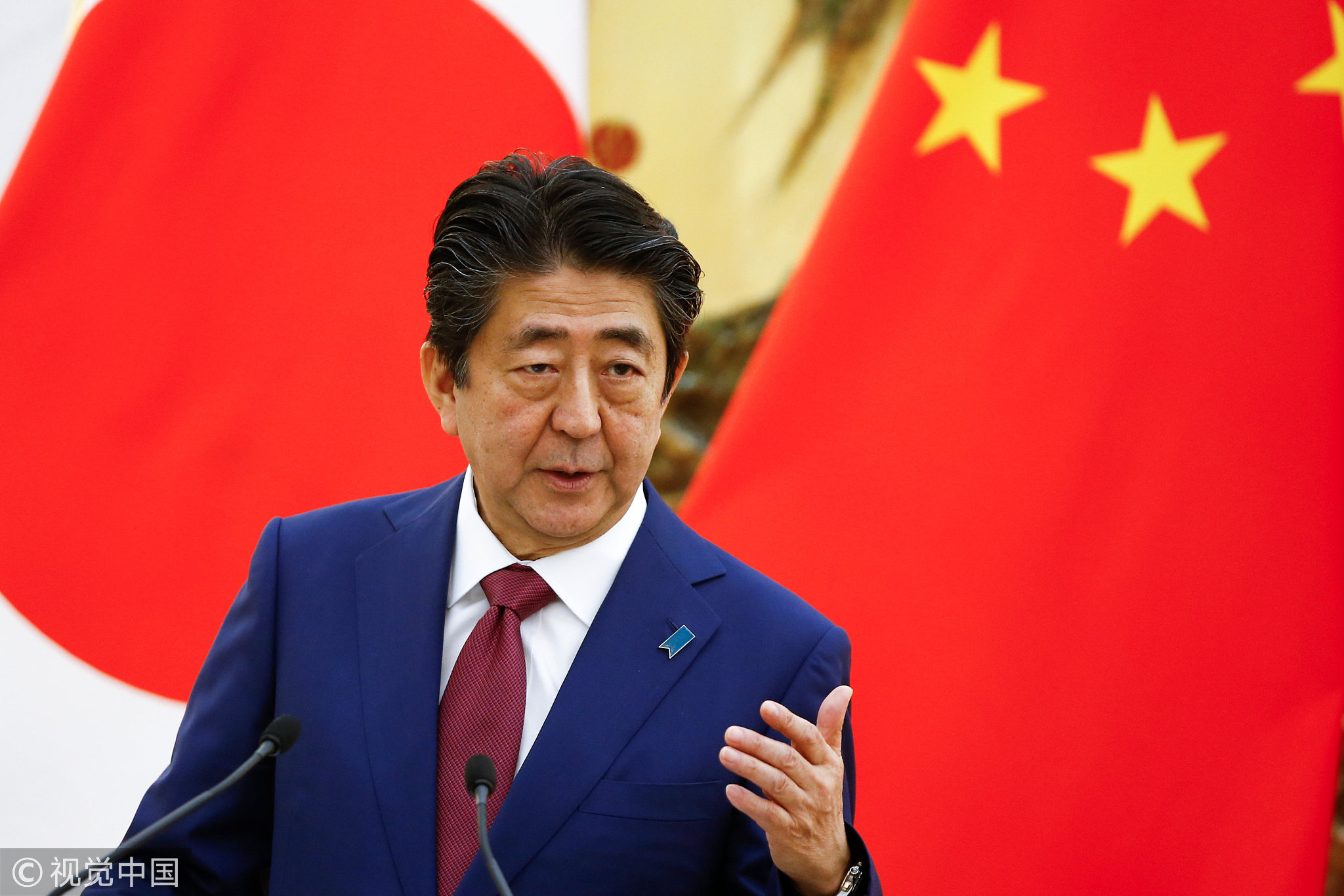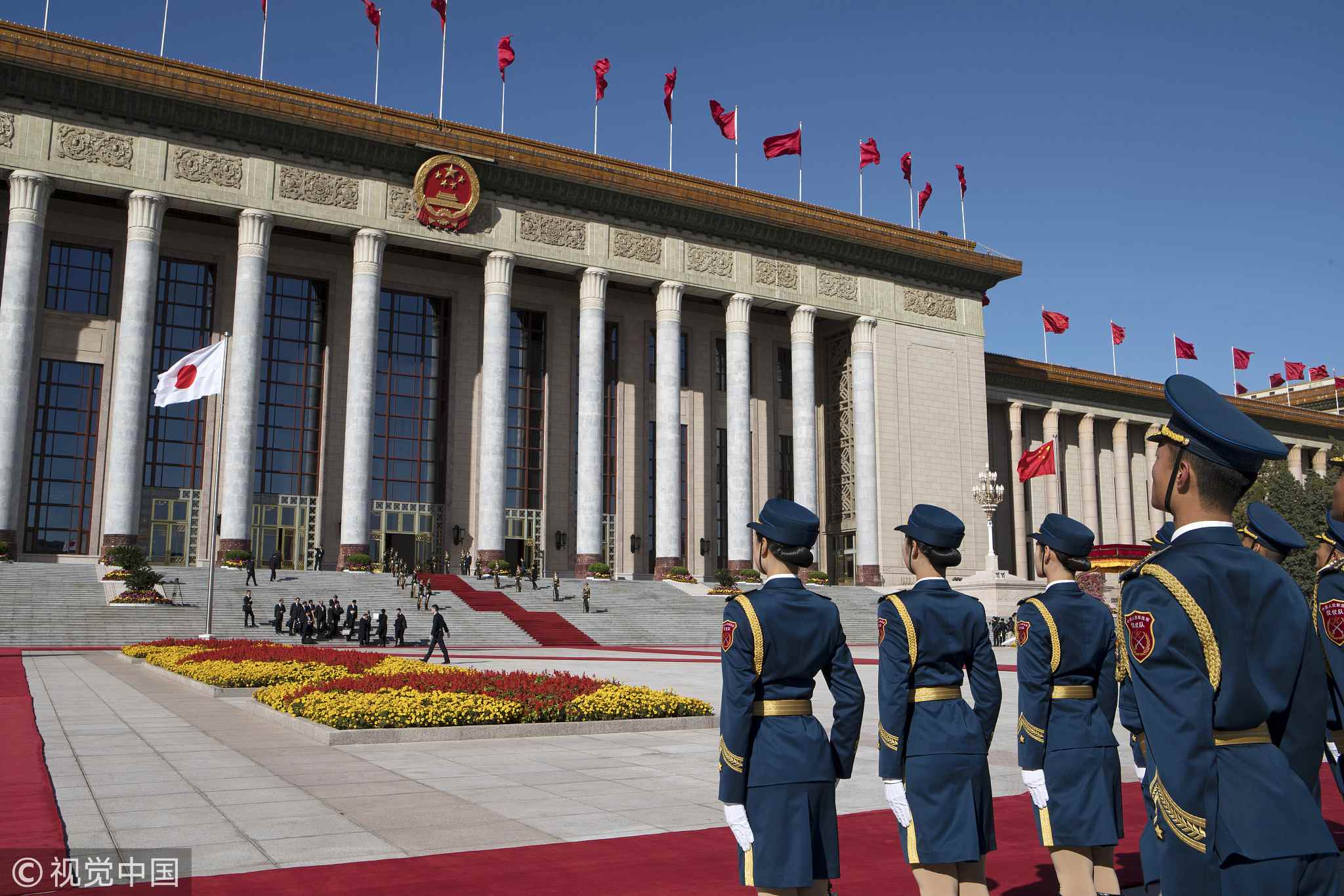
Opinions
23:02, 27-Oct-2018
Opinion: Momentum for better Sino-Japan ties will last
Updated
22:33, 30-Oct-2018
CGTN's Xu Sicong

Editor's note: Xu Sicong is an opinion editor at CGTN Digital. The article reflects the author's opinions and not necessarily the views of CGTN.
On October 27, Japanese Prime Minister Shinzo Abe wrapped up his three-day official visit to China. His last such visit as Japanese prime minister was in 2006.
This visit was highly anticipated. Before Mr. Abe came to China, Professor Huang Dahui at the Department of International Relations in China's Renmin University, said at a public lecture that he believed the good momentum for China-Japan relations would last for at least some time, even though he dismissed the notion that Abe's visit is going to reverse the general trend of Sino-Japan relations formed since 2010.
As he explained, the bilateral relationship has gone through three stages since 1972. It was characterized by "friendly cooperation" from 1972 to 1990 before entering a new period between 1990 and 2010 where "competition" emerged as another key word.
However, from 2010 onward, as China overtook Japan to become the second largest economy, "competition" has become the main trend and "cooperation" has thus taken a back seat.
With Abe's visit complete, it looks like Professor Huang’s “prediction” will most likely come true. Although the competition is nowhere near fading, the two sides will most certainly enhance their cooperation in the coming years as the visit has born fruitful results.

Japanese Prime Minister Shinzo Abe attends a news conference after a meeting with Chinese Premier Li Keqiang at the Great Hall of the People in Beijing, China, October 26, 2018. /VCG Photo
Japanese Prime Minister Shinzo Abe attends a news conference after a meeting with Chinese Premier Li Keqiang at the Great Hall of the People in Beijing, China, October 26, 2018. /VCG Photo
Progress made on 'cooperating in third-party markets'
During this visit, over 10 cooperative agreements were signed between the two governments in areas including healthcare, finance and digital technology, etc.
The forum on infrastructure investment in third-party nations was also a highlight where the two countries agreed to work together on a host of joint projects in third countries.
According to Xu Jingbo, president of Asia News Agency, apart from a high-speed rail link in Thailand, there are 51 other projects Chinese and Japanese firms agreed to collaborate on in third markets. For example, Japanese petroleum and metals conglomerate JXTG Holdings and China Petrochemical Corporation agreed to work together within this framework to build hydrogen stations.
"Third-party markets" has been the go-to phrase when it comes to China-Japan cooperation. Even though Japan has not been full-throated about officially joining the Belt and Road Initiative, a consensus has been reached with China over cooperating on investing in infrastructure in third countries.
The reasoning behind that is that both China and Japan have the funds and the technical know-how in terms of building infrastructure projects. Companies from the two countries once competed with each other in bidding for overseas projects.
Now, instead of being rivals, China and Japan can actually make investments together and collaborate in these projects, which would benefit businesses from both countries. Moreover, the two parties' joint participation would also increase the transparency of such projects, and put to rest the questions over China's intention behind its overseas investments.
The progress on this front has been made possible by the joint efforts of China and Japan to advance mutual interests and in the foreseeable future, the implementation of these projects will serve to strengthen their cooperation.

The Japanese flag is flown as members of the Chinese military stand ahead of a welcome ceremony for Japanese Prime Minister Shinzo Abe. /VCG Photo
The Japanese flag is flown as members of the Chinese military stand ahead of a welcome ceremony for Japanese Prime Minister Shinzo Abe. /VCG Photo
Key words: 'Belt and Road' and 'free trade'
The meeting bewteen Abe and Chinese President Xi Jinping also sent out possitive signals for the future relationship. The two leaders met in Beijing on the evening of October 26 after Xi finished a tour to southern China's Guangdong Province.
Some observers have been closely reading the reports released by China's Xinhua News Agency. Some draw attention to Abe's comment on the Belt and Road Initiative, which referred to the project as "an idea with potential," while Xi believed it had provided China-Japan cooperation with "a new platform and trial ground."
Observers also did not miss out on the comments Abe made concerning the trade issue. According to Xinhua, Abe said that China and Japan should "make contribution to preserving the free trade system." Given the fact that the Japanese economic miracle in the post-war era was largely a result of its exports-oriented economic policy and the world free trade system, when confronted with the pressure of a trade war from the US, it is no wonder Japan has chosen to side with China.
Abe's trip was an important step in the two countries' rapprochement. During the meeting he extended an invitation for Xi to visit Japan next year. Xi also expressed the hope for a good China-Japan relationship in the future as he believes "a healthy relationship serves the basic interests of both countries."
In international relations, there are no permanent friends or enemies but only permanent interests. Given the big number of deals signed and the good wishes expressed by both Chinese and Japanese leaders to mend ties and advance mutual interest, Abe's visit seems to be a hopeful sign that would usher in a new phase where we could see more cooperation between the two sides.
(Cover Photo: Japanese Prime Minister Shinzo Abe and his wife Akie wave in Beijing on October 27, 2018, before boarding a flight home. /VCG Photo)
(If you want to contribute and have specific expertise, contact us at opinions@cgtn.com.)

SITEMAP
Copyright © 2018 CGTN. Beijing ICP prepared NO.16065310-3
Copyright © 2018 CGTN. Beijing ICP prepared NO.16065310-3